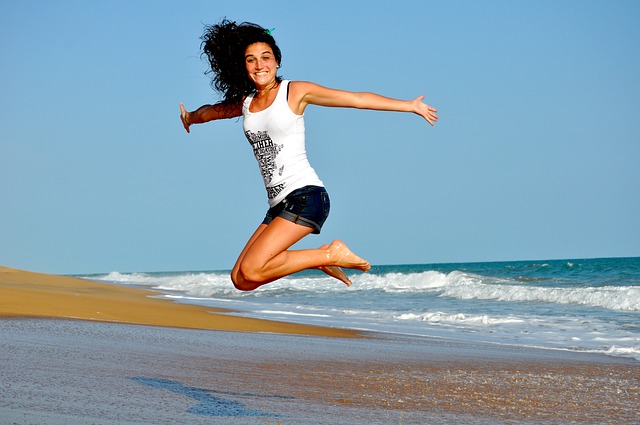Paleo Diet for Athletes – A Lesson from Our Ancestors
Paleo diet for athletes has become a popular term in the sports and fitness world these days. If you haven’t heard of it yet, you must be living in the Stone Age. Well, you wish! Incidentally, that is precisely what the Paleo diet is all about.

The Paleo Diet – Back to the Basics
While the human lifestyle has tremendously evolved since the Palaeolithic era, our diet has poorly degraded. Even the most health-conscious consumers somehow consume unhealthy calories, fatal fat, and other dangerous elements through processed food products. Such food has less nutritional value and more health risks.
The Paleo diet is about imitating our Paleolithic ancestors’ diet and eating habits. For starters, Paleo is about consuming many proteins, healthy amounts of carbs, good fats, and not to mention loads of raw fruits and vegetables. We are talking about the diet that precedes agriculture. This diet is based on food that has always been available for us to enjoy.
Numerous nutritionists and fitness experts now hail the benefits of such a diet. Athletes and trainers, however, seem to be the prime prosecutors of the Paleo Diet. Perhaps these people can experience and feel a more measurable difference.
Paleo Diet for Athletes– Energy, Strength, and Endurance
Judging by the remains of all those gigantic structures from the Stone Age, one can quickly establish that our cave-dwelling forefathers were much stronger and healthier than most of us are today. When there were no machines and technology, a typical day in a man’s life involved a lot of physical work such as walking, running, weight-lifting, etc. – more like a day in the life of an athlete in our time. This is why the Palaeolithic diet perfectly complements athletes’ diet and nutritional requirements. It is not like the usual fat-free and low-carb weight loss diet. It focuses more on building stamina, strength, and endurance.
Take a look at a few major benefits of a Paleo Diet for athletes.
• More Amino Acids (BCAA) – Paleo diet increases the intake of Branched-Chain Amino Acids that aid in muscle development and anabolic function. BCAA is also known for counteracting immunosuppression – commonly faced by endurance athletes due to extensive exercise.
• Lower Omega6: Omega3 ratio – Omega6 and Omega 3 balance is crucial for athletes. The right balance helps reduce tissue inflammations and facilitates fast healing.
• Lowers body acidity – Optimizes the PH scale for athletes. This stimulates muscle protein synthesis and eliminates the catabolic effect of acidosis on bone and muscle.
• High Nutritional Value – In the Paleo diet for athletes, grains and dairy products are replaced mainly by vegetables and seafood. The latter is more abundant in vitamins, proteins, carbs, and energy.
• More Muscle, less weight – Most nutritionists and experts agree that this kind of diet helps improve muscle mass without adding unwanted weight.
That is why it is preferred by athletes involved in endurance sports, where lighter weight can be an added advantage. These sports include running, cycling, rowing, gymnastics, etc.
The Palaeolithic Diet Plan for Athletes
As mentioned, the Paleolithic diet eliminates processed food, dairy products, grains, legumes, oils, and excess sugar.
The Palaeolithic Diet Plan consists of healthy, unprocessed food, including fish, meat, eggs, nuts, fruits, and vegetables.


However, the Paleo Diet for athletes is more about the diet schedule than the food.
Typically, Paleo diet experts suggest that 30 percent of total calories during the preparation training period should come from fat intake, while 50 percent should come from carbohydrates. However, during peak training time, calories from carbohydrate intake must be around 60%, and only 20% should come from fat intake.
Based on this understanding, a Paleolithic diet plan divides an athlete’s daily diet into five stages relative to the exercise schedule.
• Stage 1 – Eating Before Exercise
• The Paleo diet for athletes must take around 200 to 300 calories of low GI carbs at least two hours before the workout. A small amount of fat and protein must also be included, but fiber must be avoided during this stage.
• Stage 2 – Eating During Exercise
• Your body will require high GI carbohydrates to keep going during extensive workout routines. These carbs may preferably be in the form of fluids and liquid.
• Stage 3 – Eating 30 Minutes Post Exercise
• The thirty-minute period right after an extensive workout is the perfect time for a recovery drink that contains a reasonable ratio of carbs and proteins.
• Stage 4 – Short-Term Post Exercise
• This is where you eat for extended recovery, and some non-optimal food such as bread, bagels, and pasta is permissible. Glucose-rich food facilitates the carb recovery process.
• Stage 5 – Long-Term Post Exercise
• After a few hours of exercise, return to your strict and optimal Paleo diet until the next exercise schedule.
The Paleo diet for athletes is adopted and advocated by a majority of high-profile athletes. However, benefits can only be realized by adhering to strict guidelines and following a proper plan. For optimum results in less time, consult a Paleo diet expert to learn more about the Paleo Diet for athletes.
